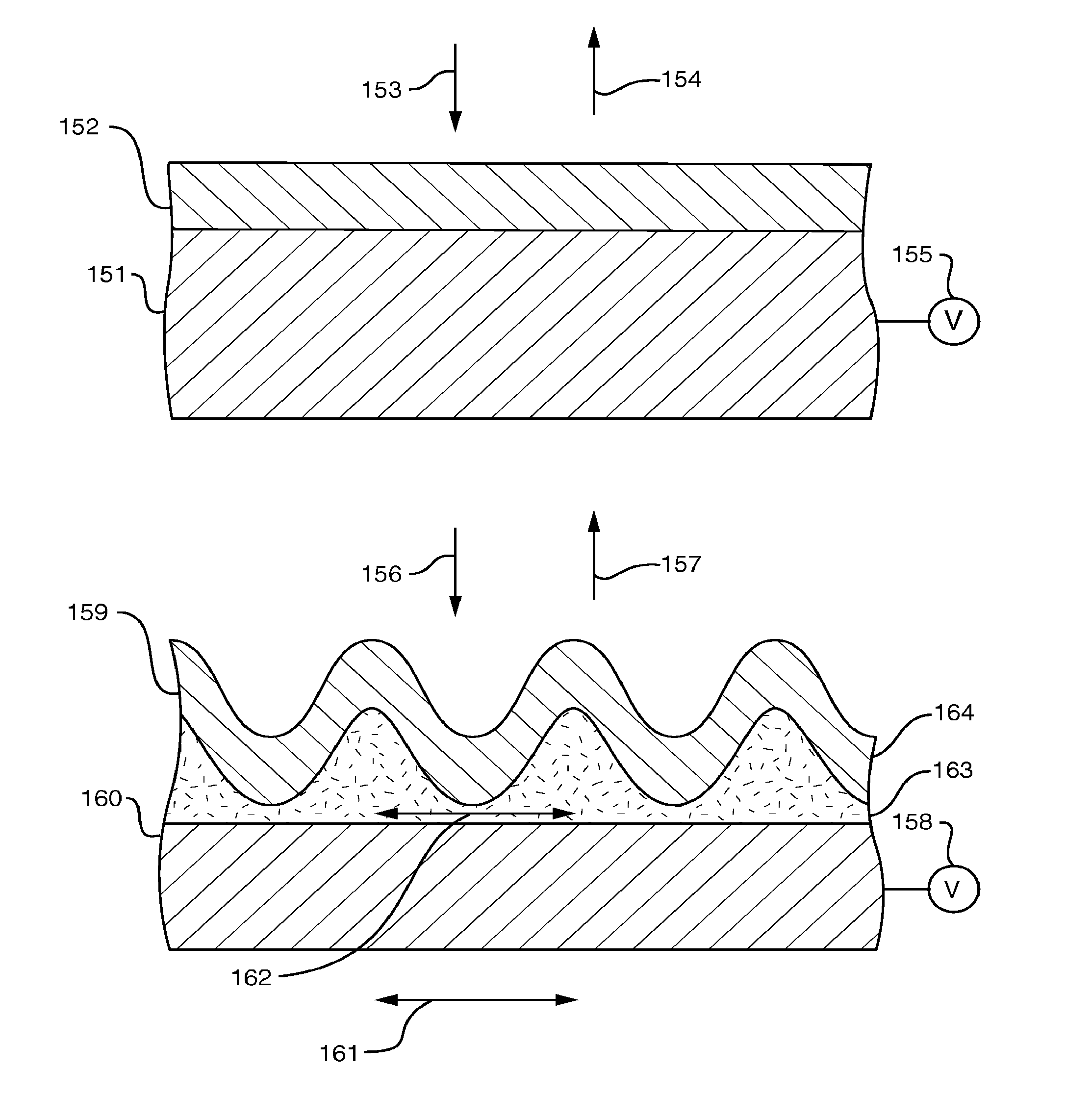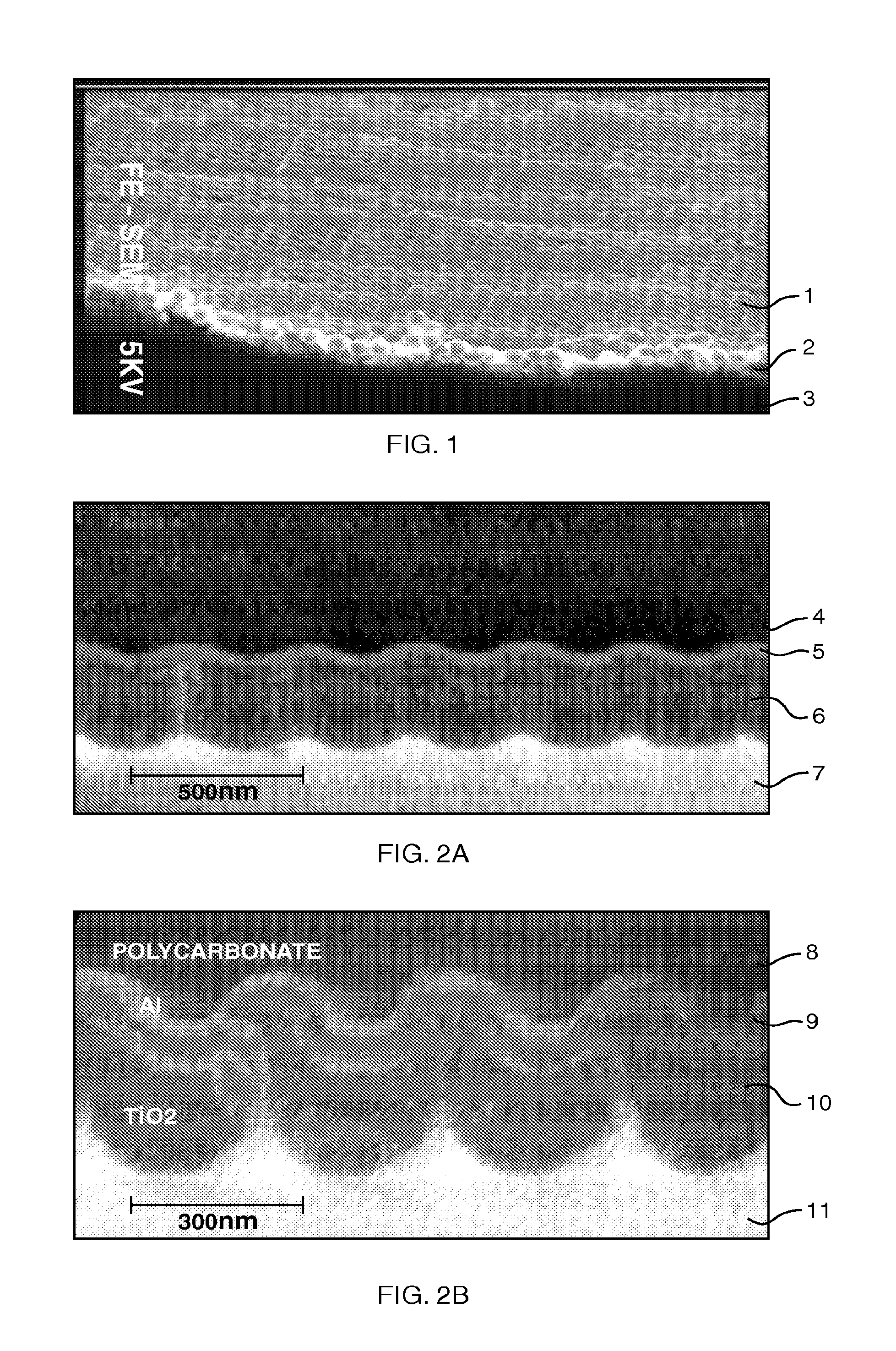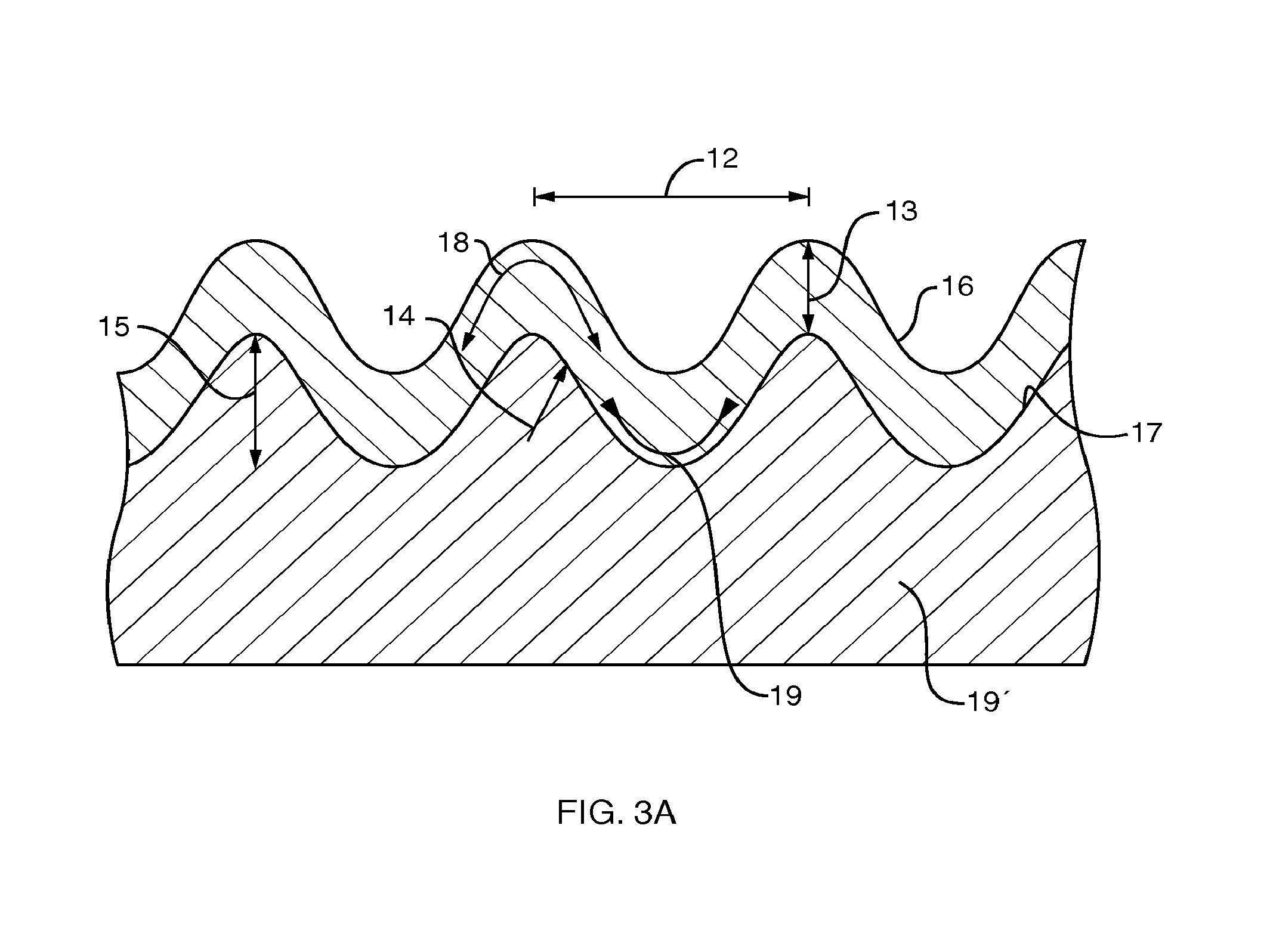Stress-induced bandgap-shifted semiconductor photoelectrolytic/photocatalytic/photovoltaic surface and method for making same
a photoelectrolytic and photovoltaic surface technology, applied in the direction of electrolytic capacitors, non-linear optics, instruments, etc., can solve the problems of pollution of land and oceans, and well-known carbon-based energy problems, and achieve high stress in titania, better matched, and high efficiency
- Summary
- Abstract
- Description
- Claims
- Application Information
AI Technical Summary
Benefits of technology
Problems solved by technology
Method used
Image
Examples
Embodiment Construction
[0116]It is known that the bandgap of a semiconductor can be altered by (1) doping, (2) adding stress, and (3) adding heat. Herein, I disclose making use of the stress that is inherent in thin films, and specifically the tensile stress, to shift the bandgap of a semiconductor further into the visible spectrum. Bandgap-shift from local heating from self-focusing of the illuminant in the film is also disclosed as contributing to the effect, but this appears to be a secondary effect in this invention. For example, the energy bandgap of GaAs, or gallium arsenide, requires a 900° C. change in temperature to drop only 0.4 eV, from 1.5 eV at 100° C. down to 1.1 eV at 1000° C. On the other hand, significantly higher magnitude changes in stress can be achieved in this invention, and so stress is the predominant factor in the lowering of the bandgap energy.
[0117]When tensile stress is applied to or caused in a semiconductor, the inter-atomic spacing increases directly. An increased inter-atom...
PUM
| Property | Measurement | Unit |
|---|---|---|
| threshold energy | aaaaa | aaaaa |
| energy gap | aaaaa | aaaaa |
| photoelectrolysis quantum efficiency | aaaaa | aaaaa |
Abstract
Description
Claims
Application Information
 Login to View More
Login to View More - R&D
- Intellectual Property
- Life Sciences
- Materials
- Tech Scout
- Unparalleled Data Quality
- Higher Quality Content
- 60% Fewer Hallucinations
Browse by: Latest US Patents, China's latest patents, Technical Efficacy Thesaurus, Application Domain, Technology Topic, Popular Technical Reports.
© 2025 PatSnap. All rights reserved.Legal|Privacy policy|Modern Slavery Act Transparency Statement|Sitemap|About US| Contact US: help@patsnap.com



